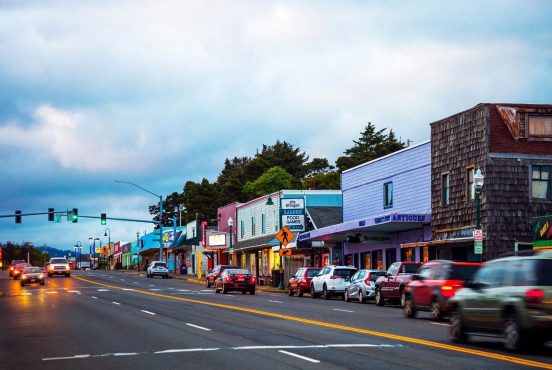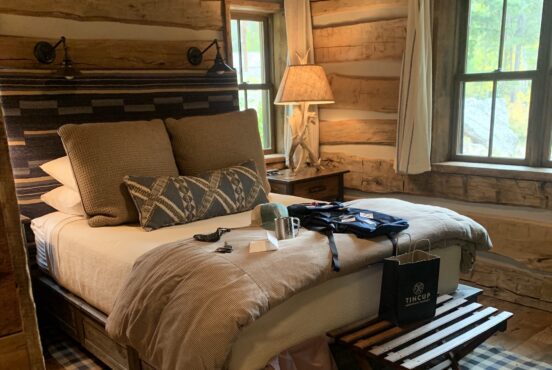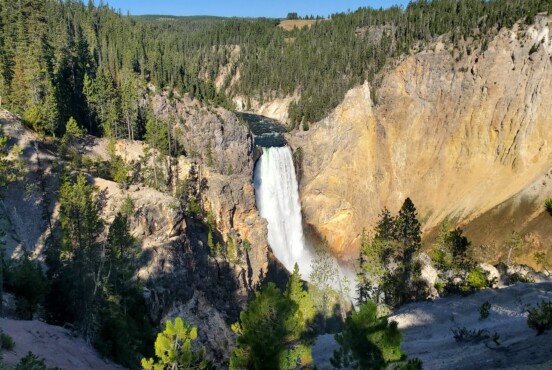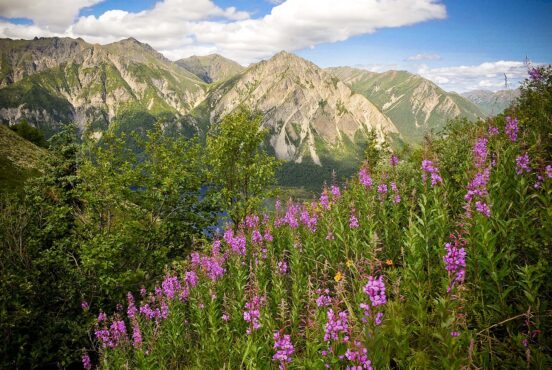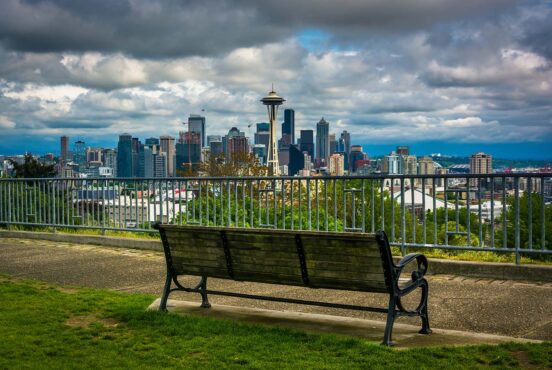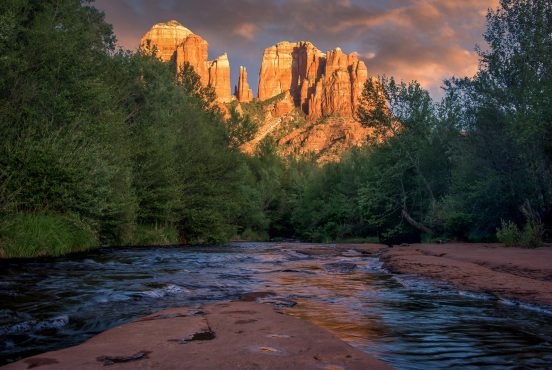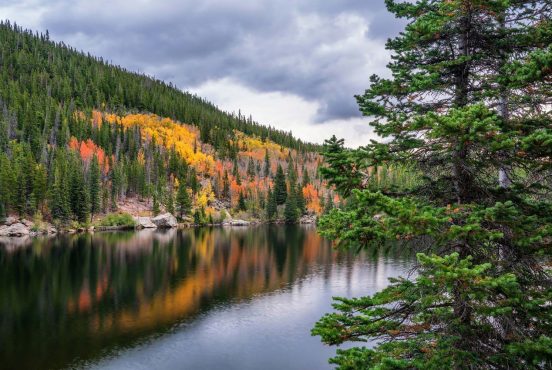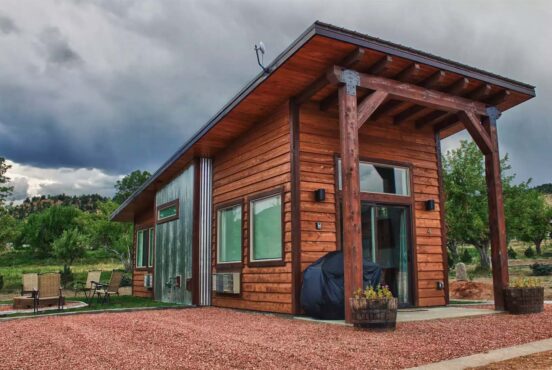For those with a fascination with the spiritual and the desolate, old deserted towns have an allure that can only be alleviated by exploration.
Luckily, Utah is full of ghost towns and abandoned mining towns to explore. There are over 100 ghost/abandoned towns in the state, most of which are old mining towns (all that remains are cemeteries or old rock walls).
However, a few remnants are especially unique and have a truly fascinating history. Read on to learn more about the 6 ghost towns in Utah you must see for yourself.
Related Read: The Top 9 Places to Get Spooked on Halloween in the U.S.
1. Sego
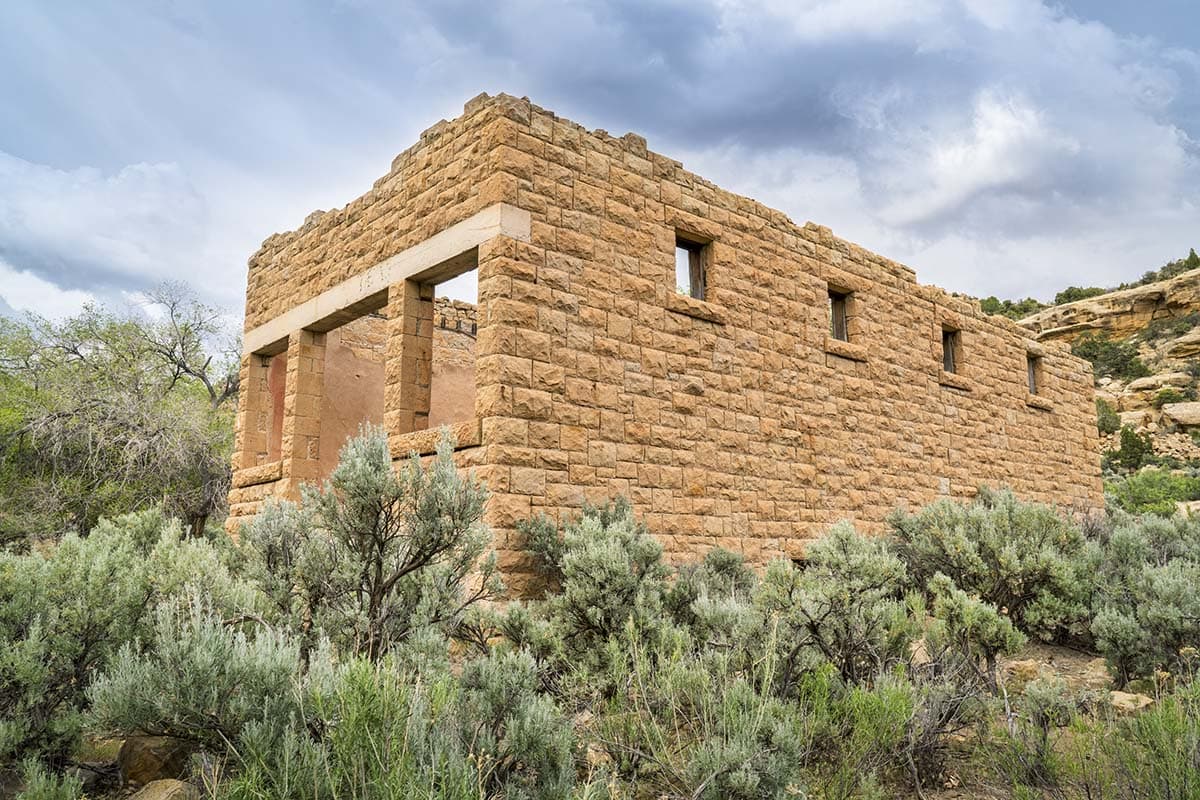
Nearest Town: Thompson Springs (10 minutes)
Just a quick hop north of I-70 is the old Sego ghost town. Set up against the Book Cliffs, this small town was once flourishing due to the discovery of a vein of coal by Henry Ballard.
Buying up land and mining the coal, the town sprang up in 1910. A short railroad spur developed in 1912, and the growth led to the establishment of a post office, company store, boarding house, and expansive growth. However, there was little water nearby (what water there was, was poor quality), and the town struggled to develop beyond a few hundred people.
The coal vein was extremely productive between 1920 to 1947, but eventually, the cost of mining the vein outpaced the income and dwindled. In the 1950s, a flash flood took out what remained of the vanishing town.
Today, only a few old stone foundations and run-down wooden structures remain. There is one large stone building that remains in decent shape. There are a few remaining old railroad cuts and trestles visible throughout the town. If you’re looking for something else to do on your visit, on the way up the canyon, there is a small roadside cliff with some interesting petroglyphs. This is a great side trip for any historian to explore!
Related Read: 6 Stunning Backpacking Routes in Canyonlands National Park, Utah
2. Home of Truth
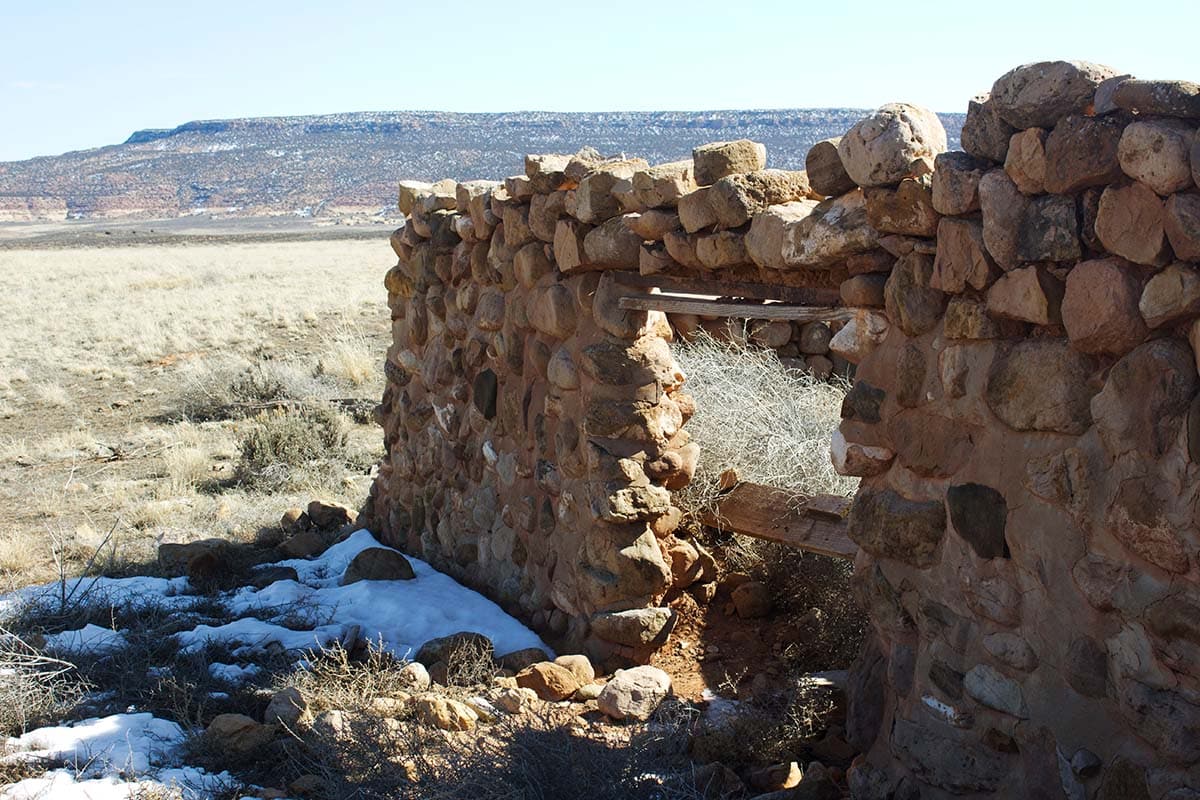
Nearest Town: Monticello
A unique ghost town, the remains of the Home of Truth are tucked in the southeast desert. Once a religious colony, the town was initially established as a post-apocalyptic utopia in 1933. The town’s story begins in New Jersey, when Marie Ogden, the grief-stricken widow of a wealthy man, began searching for answers in religion. Claiming God spoke through her (and her typewriter, she opened the “Truth Center.” She was soon told (by God) to build his kingdom in the Dry Valley near Church Rock, Utah.
Marie Ogden, by this time, had accrued a handful of diehard followers, who all believed her tales that the world was going to an end except for this new kingdom of God — the would-be site of Christ’s second coming. The commune grew from a handful to about 100 in 1935, and the property acquired about 20 buildings. Ogden lived in the inner portal, the heart of a settlement, and spread the word of God through a newspaper, printed on her typewriter.
However, in 1935, only seven diehard followers remained. The cult’s rituals spread across the land, and the decline began. Ogden’s prophecies continued to fail to come true, and her followers began to question her authenticity and abandoned the property. By the end of the 1930s, the cult was dissolved.
After Ogden’s death in 1975, the land was bought, and the new owner made a point to preserve the “Inner Portal” with hopes to restore it and open it to the public. Currently, visitors can only view the compound from the road, though many remains are visible from Utah State Route 211.
Related Read: 21 Outdoorsy Things To Do Near Moab
3. Grafton
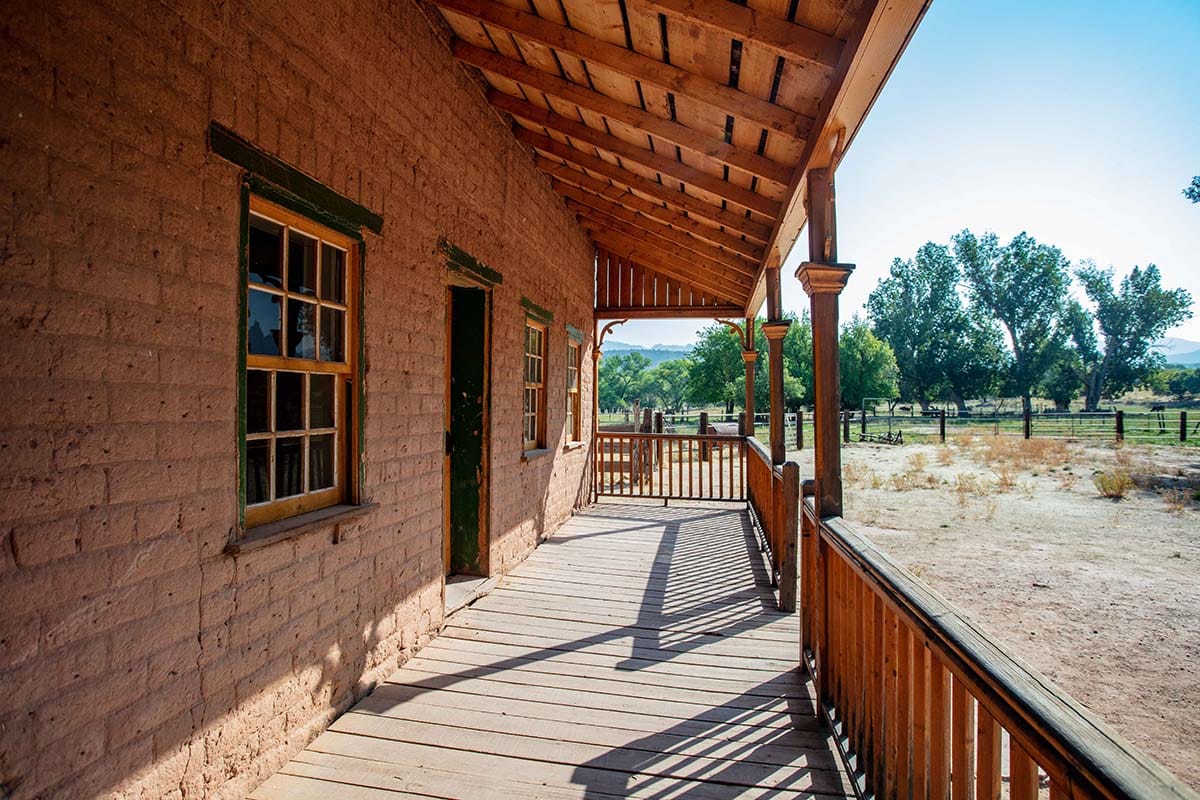
Nearest town: Rockville
Near Zion National Park is the old Mormon settlement of Grafton that was established in 1859 by a small group of five families from the nearby Virgin. The group found fertile soil to plant cotton, wheat, and alfalfa. However, frequent floods, occasional skirmishes with native Americans, and often harsh winters were brutal on the people of the small community.
Despite the challenges, it wasn’t long before the town population swelled to 168 people (28 families) by 1864. After 1907, some left the commune for the larger Rockville settlement, though the hamlet survived a bit longer.
Only a quarter-mile off the road on the way to Zion, Grafton is super accessible for anyone who wants to take a side trip. Before reaching the remains of the old ghost town, you come upon the cemetery with a few dozen graves from 1860 to 1910.
The only remaining structures are close to the road and include a barn, outhouse, a home built in 1877 by John Wood, a church/schoolhouse from 1886, a two-story dwelling of Alonzo Russell, and a house of Louisa Russell. Some of the structures have been partially restored by the Grafton Heritage Partnership to preserve them. There is even a live-in caretaker to oversee the property and management of the site.
Related Read: The Perfect Road Trip Itinerary Between Zion and Bryce Canyon National Parks
4. Silver Reef
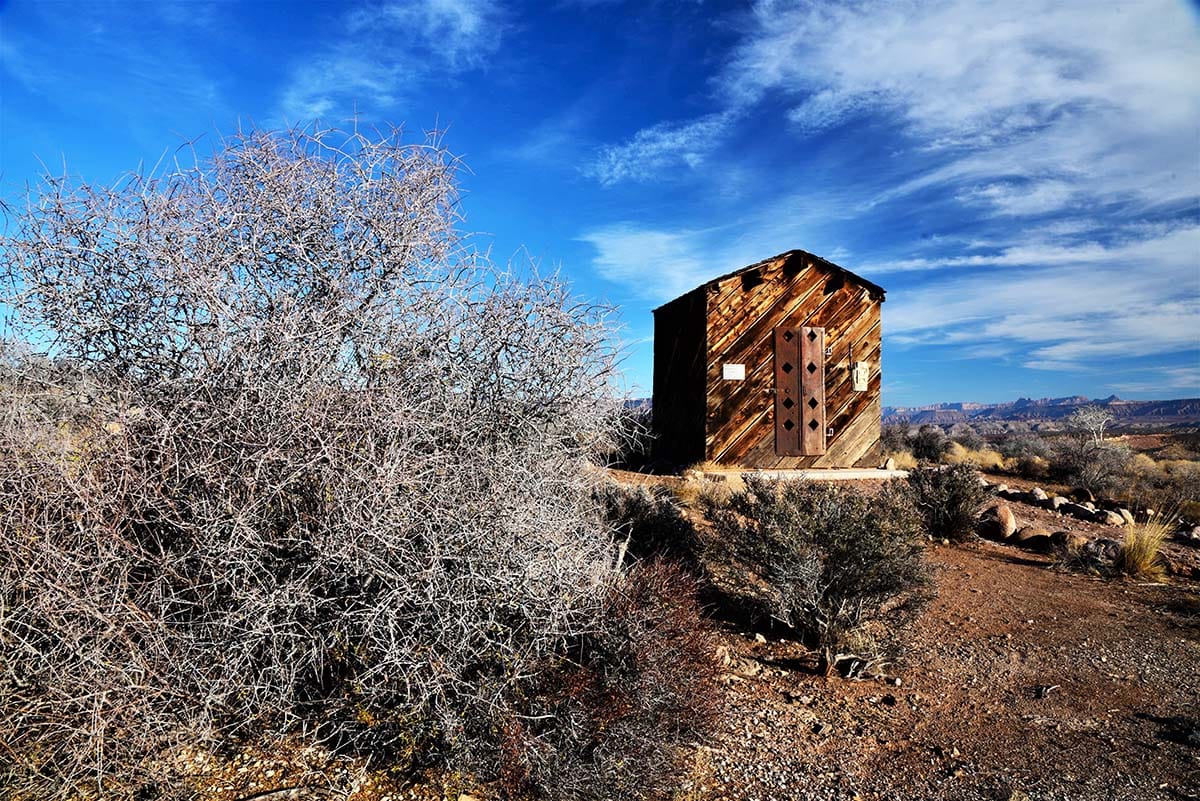
Nearest town: Leeds
Another mining town established in the late 1800s near what is now Zion National Park, Silver Reef now sits as a restored monument to its time. The old town, has been built up into an established tourist spot complete with building tours and mine exhibits. Unfortunately, there is a small admission fee to experience the site.
The town was established when a rare vein of silver was discovered in a sandstone formation in 1866. Bankers from Salt Lake City sent a client (William Barbee) to stake mining claims (21 in total), and from then, there was an influx of mining and people. Accordingly, Barbee established a small town to accommodate the miners. However, when property values skyrocketed in the established Bonanza City, miners settled on the nearby ridge, which eventually became known as Silver Reef.
Nearly 2000 people were living in the town by 1879. The town had grown tremendously — there was now a mile-long Main Street, Wells Fargo office, and restaurants. Interestingly, there was only a Catholic church, despite its location in territory mostly under Mormon influence. As the global markets prices for silver dropped, the mines slowly began to close, with most of them ceasing operations by 1884. By 1901, most buildings were boarded up, and residents moved to nearby Leeds.
Throughout the 1900s, the mines traded hands numerous times, never with much success or long-standing operations. Visiting today, all that remains are the Wells Fargo, the Cosmopolitan Restaurant, the Rice Building, and a few foundations or walls of the town.
Related Read: 5 Incredible Backpacking Excursions in Zion National Park, Utah
5. Frisco
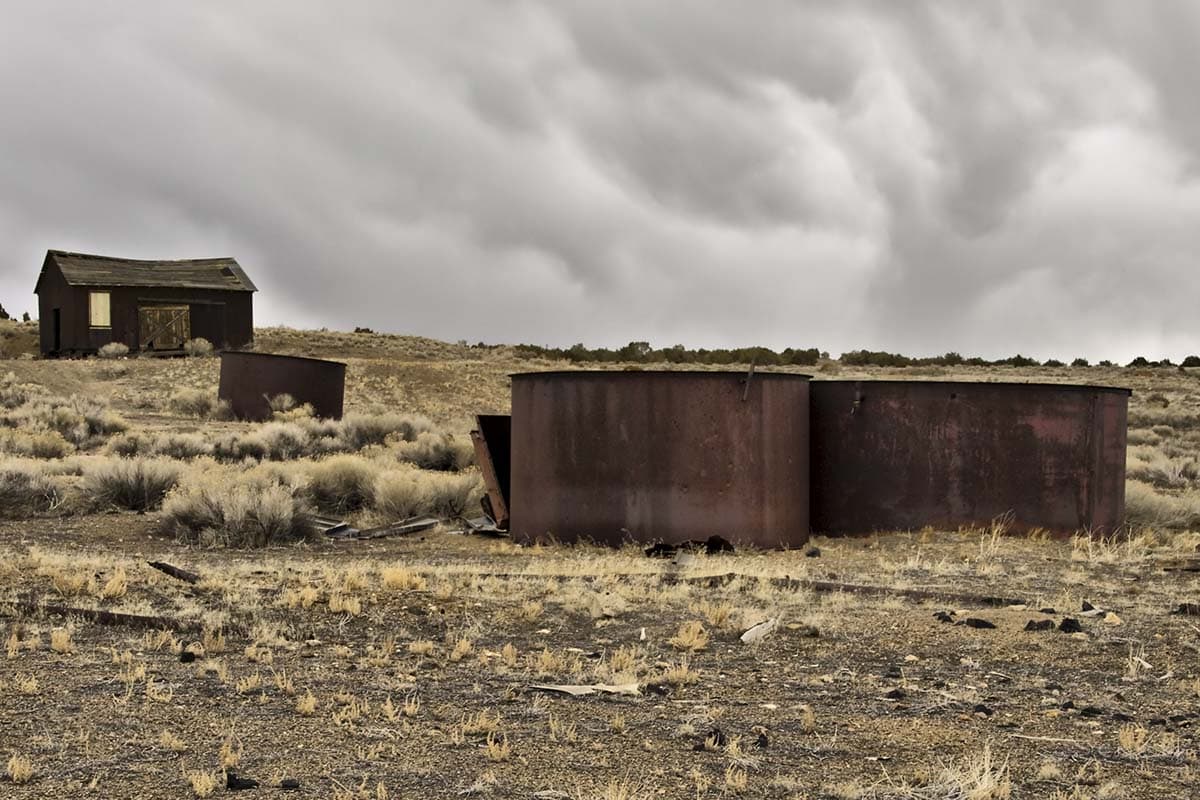
Nearest Town: Milford
At the base of the San Francisco Mountains is the old mining town of Frisco. Built in 1875, the town was established after the discovery of silver. Known as the “toughest” camp, murder was a daily occurrence in the town, with some reports suggesting an average of 12 men each night. After the discovery of silver, the population soared to over 6000 people — even with the daily debit of 12 souls.
The town was scattered with saloons, hotels, gambling halls, and a top-notch redlight district. The Horn Silver Mine produced over $20 million of ore by 1885 and over $60 million of copper, lead, silver, and gold. However, in the winter of 1885, the mine caved in, and the remaining massive fortune was lost forever. Small operations remained until 1929, but Frisco’s productivity faded over the years.
Today, a few old stone kilns and buildings stand in Frisco. The charcoal kilns are by far the most notable feature with their dome-stoned structure — they are even listed on the National Register of Historic Places. There is some old mining equipment that is barely recognizable, rusting away in the desert sand. A highlight for many folks visiting the town is the old cemetery with headstones dating to the 1800s.
While you visit this spot, please do not enter the mines — it is both illegal and incredibly dangerous due to the instability of the mine. On top of that, some gas still emanates from one of the mines. Entering these places can be deadly.
Related Read: 10 Best Utah Lake Camping Destinations for a Weekend on the Water
6. Cisco
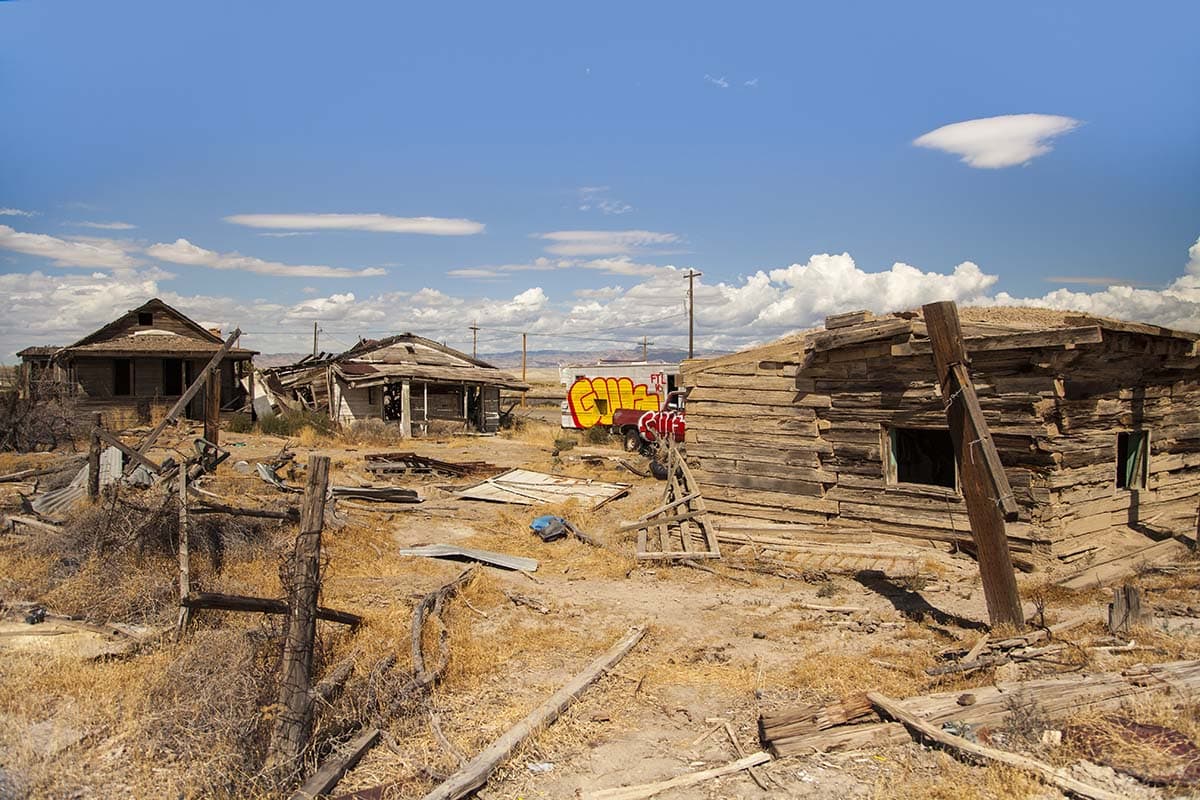
Nearest town: Thompson Springs
Located right off I-70, the road past Cisco is the back way to Moab. The town was established in the 1880s as a water refilling station for the Denver-Rio Grande Railroad and slowly developed. There was a saloon to start, but more establishments popped up as travelers passed through, including stores, hotels, and restaurants.
Eventually, herds from the Book Cliffs began passing through the small town of Cisco, using it as a provisioning center. Around 1900, there were over 100,000 sheep sheared at Cisco each year. Unfortunately, the town was linked to the steam locomotive, and the town’s economy crashed when the interstate was built, bypassing the small town.
Today, there are numerous relics of the town. Driving through, you wouldn’t think much of it, and the old buildings have lured vandals, and it has become a popular spot to abandon litter and vehicles. The more interesting aspect of Cisco’s more recent existence is the presence of Eileen Muza.
In the early 2010s, the artist began a residency in Cisco. She lives in the town (alone) and uses old salvaged and on-site materials to transform the relics into art. There is now an Airbnb, skatepark, an old bus with a wooden snake winding through, and of course, a welcome mural.
Related read: 10 Wild West Facts of Everyday Life on the Frontier
Explore More in Utah
Get epic travel ideas delivered to your inbox with Weekend Wanderer, our newsletter inspiring more than 10,000 readers every week.


